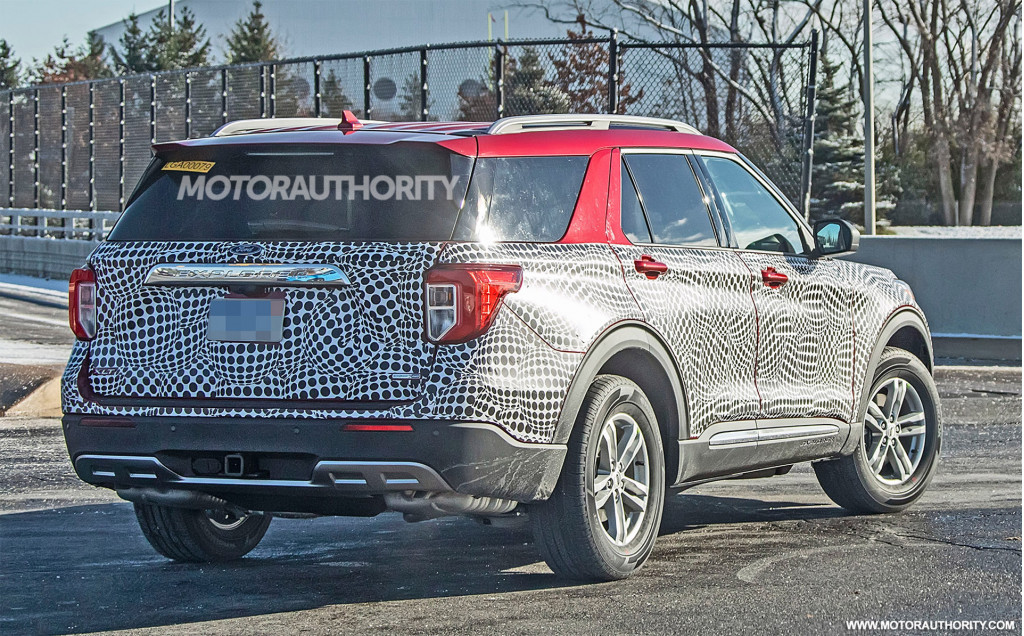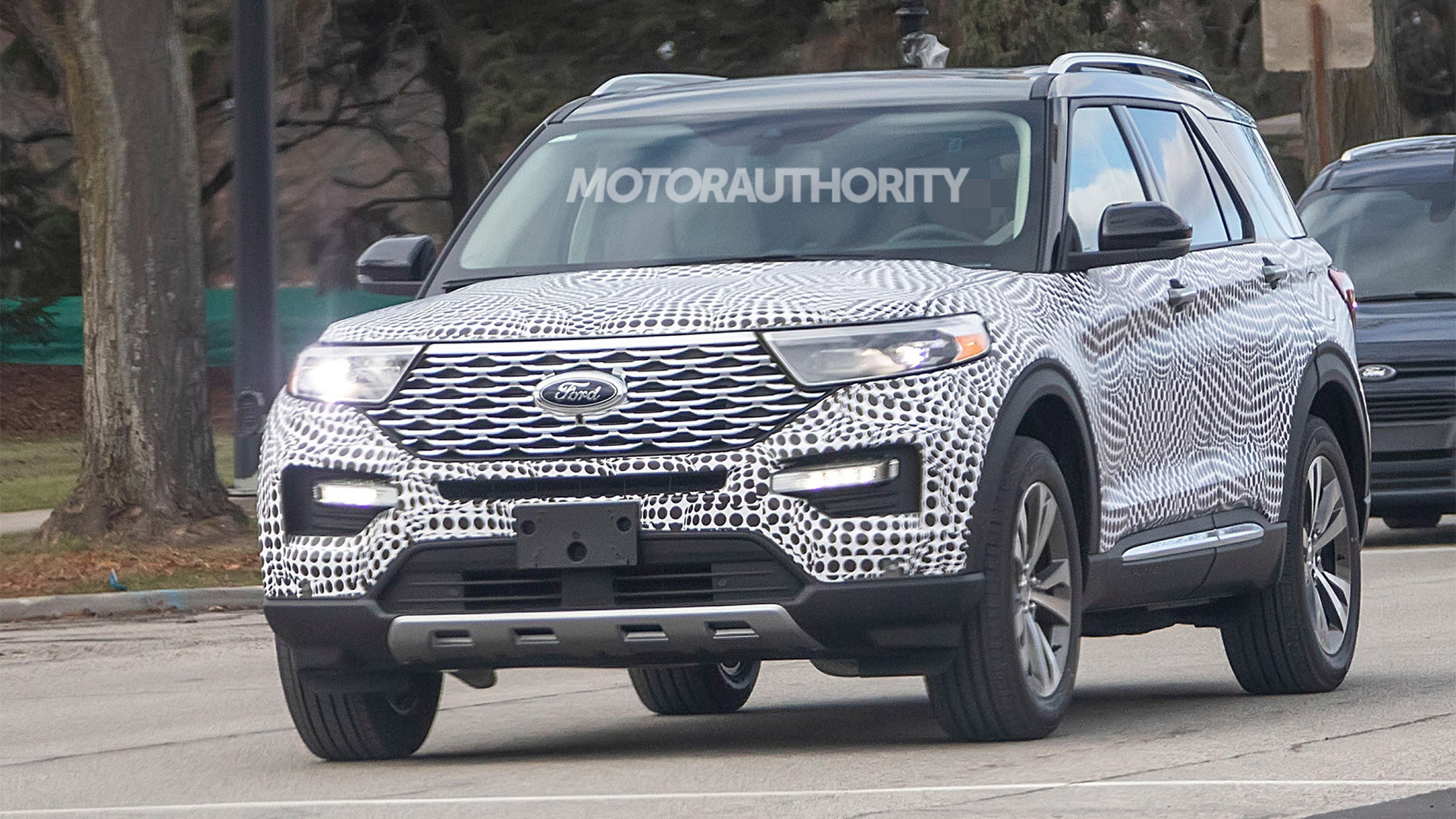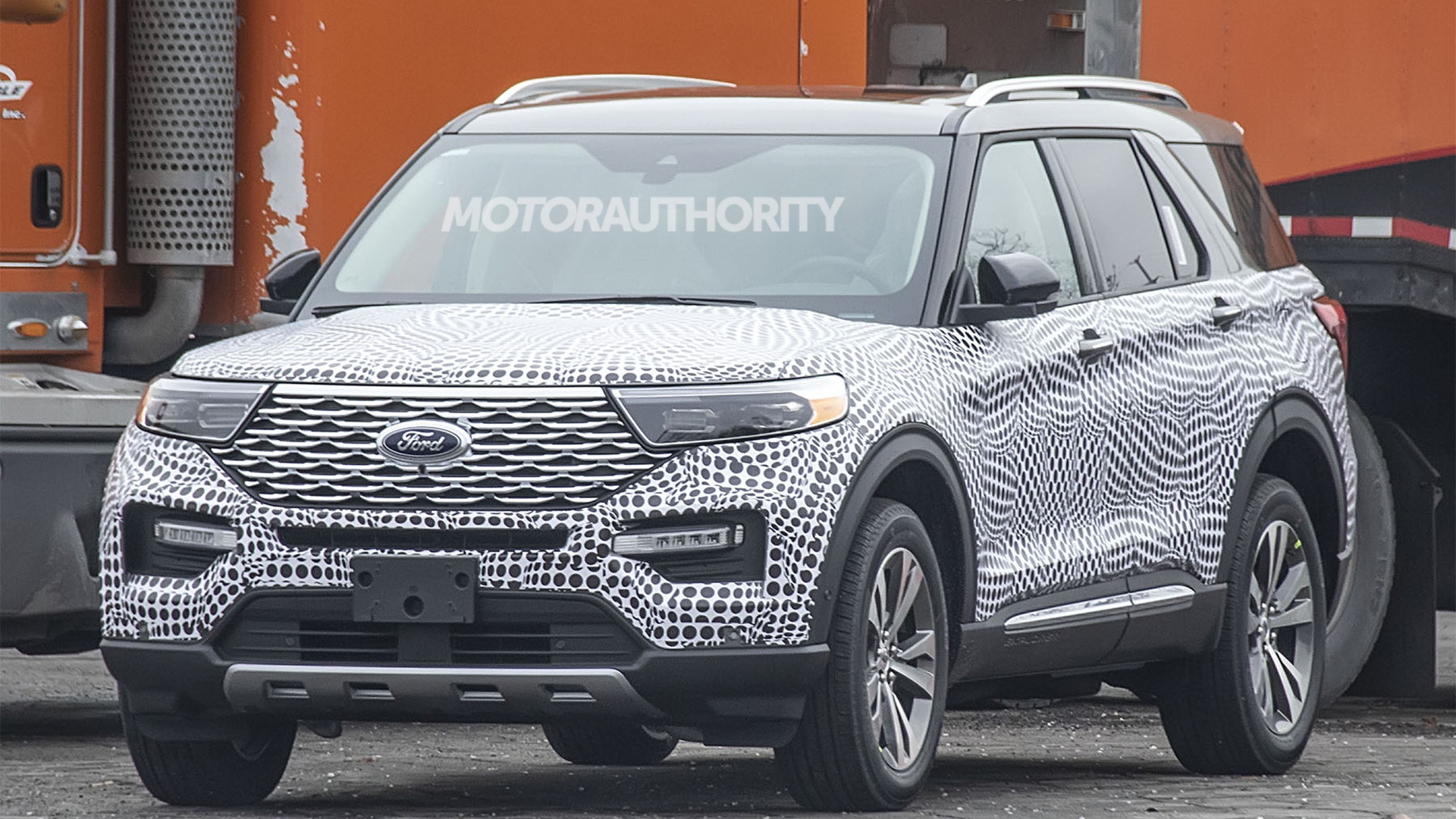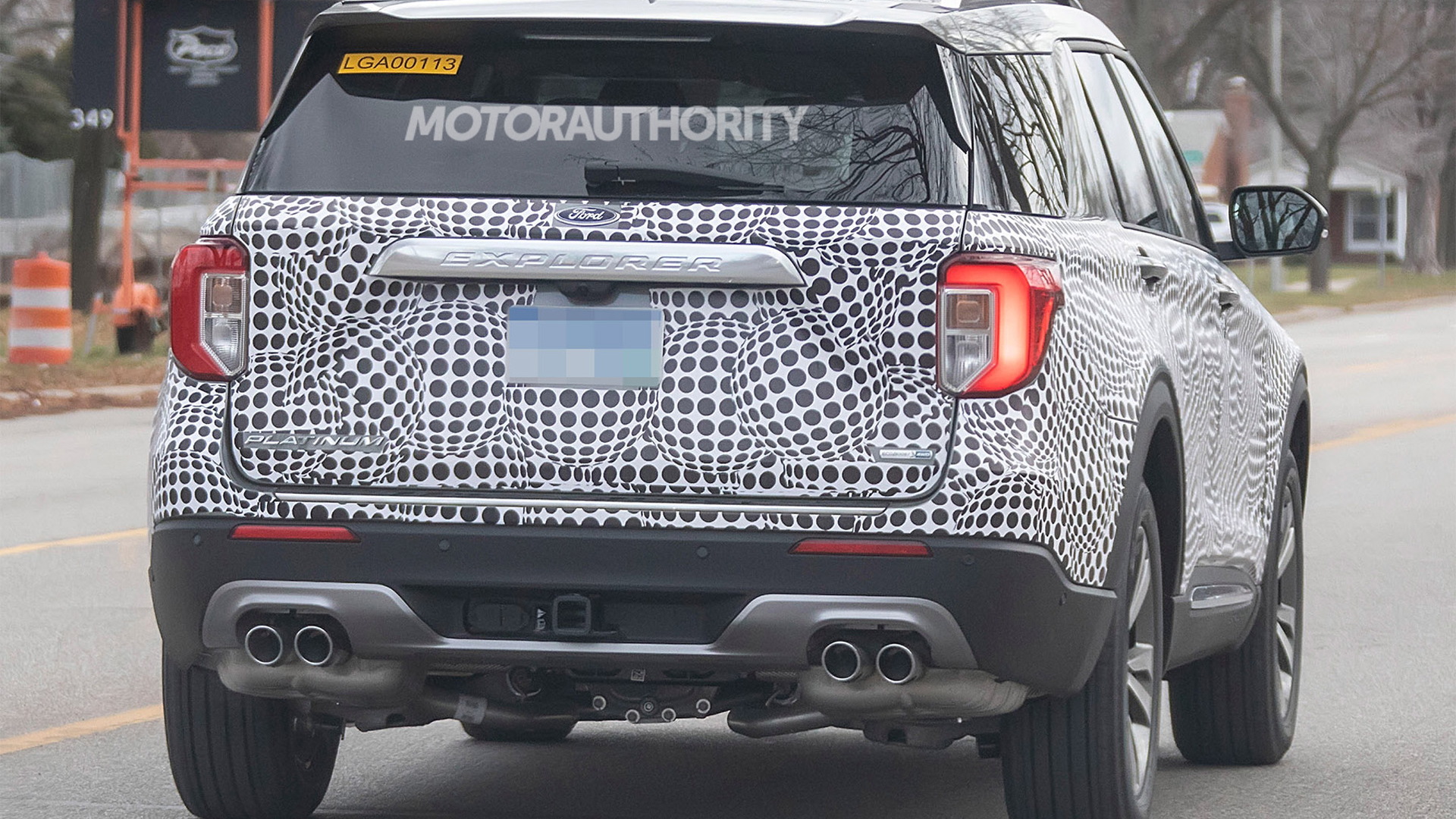A prototype for Ford’s next-generation Explorer has been spotted again. The vehicle is expected on sale in 2019 as a 2020 model, and judging by the lack of camouflage gear the debut should take place very soon.
The last time the Explorer was redesigned was in 2011, when the popular SUV adopted car-like unibody construction and an inline-4 as the base powertrain. The 2020 model will follow a similar formula, though it looks to be growing in size.
The photos hint at evolutionary changes to the Explorer’s shape but the face takes on a more prominent look with the redesign. There’s still a big, blocky form for the body, plus space for three rows of seats. The latest shots show the vehicle in upmarket Platinum trim.
Ford has much more radical changes for the parts we can’t see, however. The 2020 Explorer will be one of the first models to ride on Ford’s next-generation platform for larger models. Code-named D6, the highly flexible platform accommodates front-, rear- and all-wheel-drive configurations.
The Explorer will ride on a rear-wheel-drive configuration but offer all-wheel drive. This configuration is the same one Lincoln is using for its revived Aviator, which is also coming for 2020.
Ford's newfound love of aluminum should continue with the 2020 Explorer to help reduce weight and in turn improve economy.

2020 Ford Explorer spy shots - Image via S. Baldauf/SB-Medien
And once again the base powertrain should be a turbocharged inline-4, specifically a version of the 2.3-liter mill in the Mustang Ecoboost. Above this is expected to sit a naturally aspirated 3.3-liter V-6. The 3.3-liter mill will also be available with a hybrid option.
For performance fans, a new Explorer ST has been confirmed. It will replace the current Explorer Sport, which comes with a 3.5-liter twin-turbocharged V-6 good for 365 horsepower. The Explorer ST's engine is expected to be a 3.0-liter twin-turbocharged V-6 with output hovering close to 400 hp.
Speeders beware, as the new Explorer will also do duty as a police vehicle. Michigan State Police recently tested the vehicle with the twin-turbo V-6 and found it to be quicker than any other police vehicle on the market.









